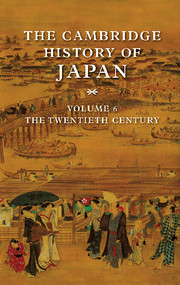3 - Politics and mobilization in Japan, 1931–1945
from PART I - DOMESTIC POLITICS
Published online by Cambridge University Press: 28 March 2008
Summary
INTRODUCTION
As Taichirō Mitani showed in Chapter 2, Japan's conservative political parties (kisei seitō) surmounted the obstacles to parliamentary influence in the Meiji constitution and during the 1920s occupied a prominent position in both the lower house of the Diet and the cabinet. From 1924 to 1932, the two conservative parties monopolized the premiership and extended their influence among other political elite groups. Between 1932 and 1940, however, party influence declined swiftly and steeply. In its wake, the opinions of administrative specialists in the civilian and military bureaucracies, joined by the views of a newly emergent business elite, became paramount in the determination of Japan's foreign and domestic policies.
Ironically, both the successes and failures of party politicians in amassing political influence were predicated on the development of a political culture in late Tokugawa and Meiji Japan that supported the proposition that those with a demonstrated practical ability to govern should be given the reins of political power. This conviction was first manifested in the bakumatsu era, when the muffled ideological tensions erupted between the hereditary principle of power transfer and the Confucian concept of “rule by the talented.” The leaders of the Meiji Restoration also believed in the principle of meritocracy. They recruited talented young followers into their personal political factions (hanbatsu) and established institutions of higher learning (Tokyo Imperial University, the Army and Navy war colleges) to teach future leaders the expertise requisite to Japan's survival in the modern world. By 1910, these institutions had become the primary sources for the nation's civilian and military administrative leaders.
- Type
- Chapter
- Information
- The Cambridge History of Japan , pp. 97 - 153Publisher: Cambridge University PressPrint publication year: 1989
References
- 2
- Cited by



